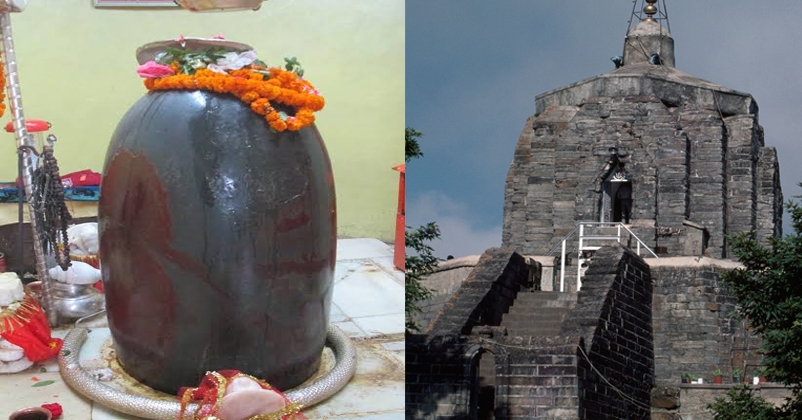The ancient Shankaracharya Temple - A gripping history
| 25-Feb-2021 |

As reports suggest, there are nearly 1,842 Hindu places of worship in the Kashmir valley, including temples, shrines, holy springs, holy caves, and holy trees. According to official figures, of the 952 temples, around 212 are although running, yet 740 are still in dilapidated condition. After the Kashmiri Pandits' exodus from the valley during the early nineties, just 65 temples remained open and they were reportedly open mainly due to the presence of security forces or non-migrant Pandits living in the vicinity. Where in 1997-1998, 35 temples were revived mostly in the villages, from 2003 till date, 72 more temples have been revived by the tourism department in collaboration with the managing committees of the temples. And now that the central government is committed to restoring religious sites in the valley, we must as well go down in history to know better the ancient heritage of the nation.
SHANKARACHARAYA TEMPLE
One of the oldest and famous stone temples of Lord Shiva in Kashmir is the Shankaracharya temple. It is located in the heart of the Srinagar city, on a hilltop about one thousand feet above the ground level, overlooking the Dal Lake.
The splendid temple of Shankaracharya, dedicated to Lord Shiva is an ancient Hindu shrine on the Zabarwan mountain in the scenic city of Srinagar. Many sources suggest that the temple was a Buddhist place of worship at some time and was changed into a Hindu temple by the great saint and philosopher Adi Shankaracharya. Built in the indigenous early Kashmiri style of architecture, the temple was built sometime in 200 B.C by the great Indian Emperor Ashoka’s son, Jalauka.
The temple was originally built by King Sandhiman of the Gonanda Dynasty. He gave the name, Jyeshteshwara and the hillock, Sandhiman Parbat. According to Aurel Stein, King Gopaditya repaired the temple and the hillock was re-named, Gopadari or Gopa Hill. He donated two villages, the present Gupkar and Buchwara for the maintenance of the temple. King Lalitaditya repaired it again. However, the name of the temple remained unchanged.
The Shiva temple is a massive stone structure built on a high octagonal plinth about thirty feet high. The plinth is surmounted by a low parapet wall about twenty-four feet long on each side, the inner surface of which was originally adorned by a range of eighty-four round headed recesses enclosed in rectangular panels. The greater part of the wall has now fallen. The shrine consists of a cell, circular inside, with a diameter of thirteen feet. Externally it is square with two projecting facets on each side. The surface is plane, except for the salient and re-entering angles of the facets. The thickness of the walls in the middle of each facet is about eight feet. The basement is of thirteen layers of stone and is about twenty feet high on the solid rock. The square building of the temple is supported by the basement. It has eighty-four recesses on its exterior and is surrounded by a parapet enabling devote to have the Parikrama of the temple. The stairs leading to sanctum sanctorum number thirty-six, first flight of eighteen steps followed by twelve steps and again followed by six steps on either side of the landing terminating the second flight. The total of thirty-six steps is in accordance with Hindu tradition, thirty-six denoting as many elements of which the cosmos is made.
To the north of the base is a low cell ten feet eight inches square, entered through a plain and nearly circular-headed low doorway. The ceiling is flat and built of plain stone slabs placed on long stone joints, which rest on long beams supported on two octagonal columns. To the south-east of the temple base, slightly lower down the hill, is a tank ten feet square.
TEMPLE SHIVLINGA
The original Shiva Lingam in the temple, along with over three hundred precious idols of Gods and Goddesses therein and other structures around the temple, were destroyed by Sultan Sikandar who ruled Kashmir. It was repaired during the Sikh rule. Later it was repaired by Maharaja Ranbir Singh, the second Dogra ruler of Kashmir.
The temple was originally connected with the river Jhelum near the temple of Goddess Tripurasundari on its right bank known as Shudashyar Ghat by a finely sculptured stone stair up to the top of the hill. Emperor Jehangir dismantled this flight of steps and the stones were used by his queen, Noor Jehan, to build a huge mosque, known as Pathar Masjid. Sunni Muslims never used this mosque for prayers because a Shia woman had built it.
The present structure is believed to date back to the 9th century and the Shivalinga was placed inside in the 19th century during the reign of the Sikhs. The temple became a hub of activity during this period and regular services were conducted within its premises. The fortunes of the temple experienced a revival during the Sikh period, with prayer services and festivals like Shravan Poornima being celebrated in the shrine.